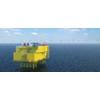Partners Lead New Swarm Technology Research
U.K. based marine technology company Autonomous Robotics Ltd (ARL) will collaborated with Aberdeen’s Robert Gordon University (RGU) to research simultaneous, distributed and scalable localization system for a swarm of autonomous underwater sensor flying nodes.
The research will aim to further enhance the capability of the flying node system and further reduce the cost and time for ocean bottom seismic surveys.
RGU is a leading Scottish university in Aberdeen, the oil capital of Europe, and its School of Engineering has an outstanding track record of working in collaboration with industry.
The Swarm Technology research will be performed by Dr. Wai-keung Fung and Adham Sabra, who are with the Communications and Autonomous Systems Group within the School of Engineering, with results of the research expected within 12 months.
ARL Chairman Dave Grant said, “ARL are working with RGU to research and create a practical localization system for the flying node system which will allow the flying nodes to operate in a swarm and move from their initial seabed position to a new seabed location. This Swarm Technology will be used to enhance the capability of the flying node system and provide even greater savings in cost and time for the offshore energy operators performing ocean bottom seismic surveys.
“I would also like to thank the Oil & Gas Innovation Centre (OGIC) for their support of this project. OGIC assists companies to find academic partners and provides funding for innovative projects which benefit the oil and gas industry.”
Dr. Wai-keung Fung, Group lead of the Communications and Autonomous Systems Group at RGU, added, “This great opportunity enables our research group to apply AI algorithms for large scale underwater swarm localization, which is one of the core research problems in underwater robotics and sensor networks. Localization accuracy can be greatly improved by fusing estimates from multiple localization methods. This can enhance autonomous deployment and retrieval of underwater flying nodes for various subsea missions, including marine seismic surveys.”
Ian Phillips, Chief Executive of OGIC, added, “These examples highlight the exciting technology which can be developed when we work with the expertise and knowledge that exists within Scottish universities. Supporting these university-introduced projects is just another way we are continuing to invest in the future of the industry.”














 December 2025
December 2025



